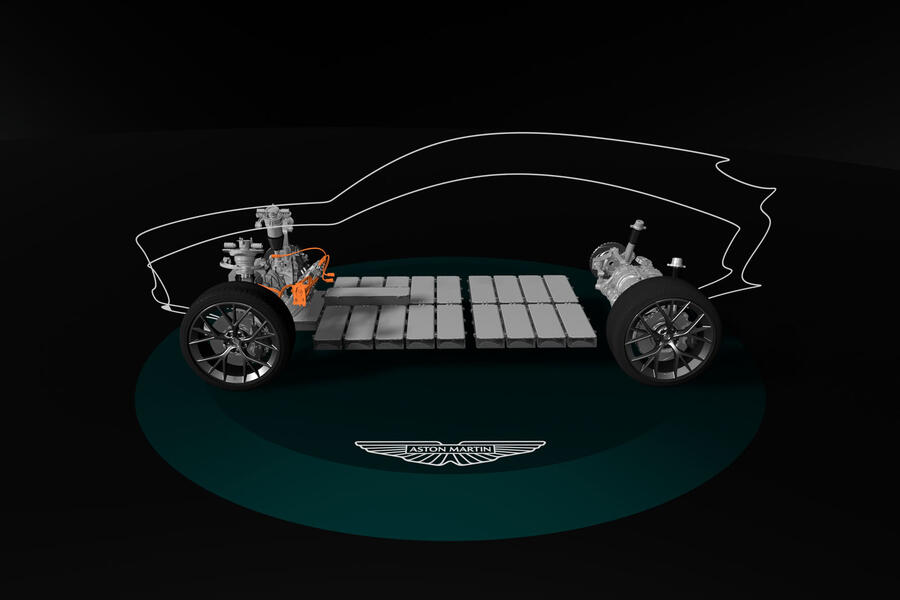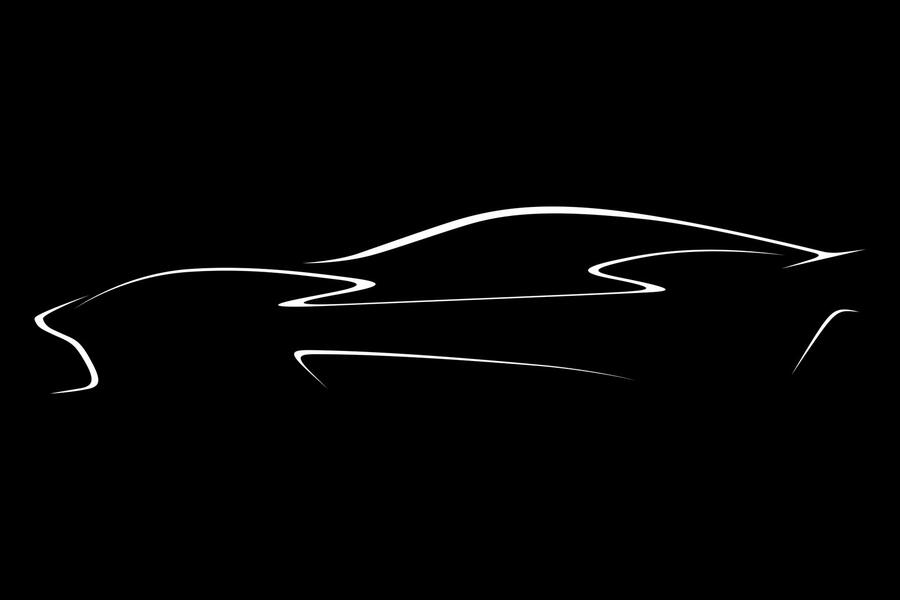Aston Martin has received £9 million in UK government funding to accelerate its electrification programme, which is set to yield the firm’s first EV in late 2025.
The funding, provided through the Advanced Propulsion Centre (APC), will help Aston to develop a new platform for a range of electric cars. This will start with a new SUV that will be followed by a GT by the end of the decade.
Government backing represents a “major boost” to Aston’s R&D programme, said chief technology officer Roberto Fedeli.
He added: “Providing further resources to explore the possibilities of our bespoke BEV platform, it will help achieve our ambition to be an in-house BEV technology leader in the ultra-luxury, high-performance segment.”
Ian Constance, chief executive of the APC, added that "this latest announcement includes a diverse set of OEMs and suppliers that demonstrate the strength of UK automotive" that will "continue to drive the UK to deliver on its net-zero ambition".
Aston's new platform will be powered by motor and battery technologies supplied by American EV maker Lucid.
Aston chairman Lawrence Stroll previously said the deal with Lucid, confirmed in June, had been more than two and a half years in the making and that the firm had emerged as the outstanding partner for Aston's EV aspirations after a competitive tender process.

Read more: Aston Martin DB12 review
The structure of the $232m (£182m) deal had Lucid take a 3.7% shareholding in Aston, which gave £79m in equity to enable that shareholding.
The balance is to be paid in cash instalments between now and 2026 and there is a further £177m to come from Aston to pay for the components as an effective minimum spend in what's billed as a long-term supply deal.
Aston will subsequently not take forward a similarly structured deal with another shareholder, Mercedes-Benz, that it had an option on. However, its existing supply deal with Mercedes-Benz for powertrains and electrical architectures was not affected by the Lucid deal, and the EV platform would use a Mercedes electrical architecture.
Aston and Lucid also have a common investor in Saudi Arabia's Public Investment Fund but Stroll said the firms were talking independently of this.
"After our due diligence, Lucid exhibited the best existing technology with the highest level of horsepower and the smallest battery height," he said. As Aston only wants to have one EV platform to give it the option to launch a model into any segment, that last point is important as it will allow Aston to make the usually-challenging sports cars using Lucid battery technology.
"The target for Aston Martin is to build the highest-performance EVs and we found ourselves [with Lucid] of a similar mindset and very aligned. We are proud to be partners with Lucid," said Stroll.
The start-up currently produces one model – the Lucid Air saloon – offering it with single-, dual- and tri-motor powertrains, of which the most powerful outputs more than 1200bhp. It says its current-generation drive units are individually capable of producing up to 670bhp while weighing slightly less than 74kg apiece.
![]()
Aston will get access to Lucid's electric drive units, which house the motor, inverter and transmission in an integrated unit. Lucid boss Peter Rawlinson said that these have 9hp per kg of power density, which is more than double Tesla and eight times that of Hyundai's motors. The firm is also working on motors for racing that have 17hp per kg.
Aston's electric cars will use four motors, with power outputs potentially up to 1500bhp. "Aston will use four motors, we're three," said Rawlinson, who as well as being Lucid CEO is its chief technology officer. "Aston Martin are taking it to the next level." Four-motor technology will see a twin-motor front axle that will be unique to Aston Martin.
Lucid will also supply battery cells and modules, and Aston will then use them in a battery pack of its own design. All components will be built in Lucid's factory in Arizona and shipped to the UK.
Rawlinson said all technology was derivative of that on the Air but with "significant software changes". He added: "The main difference is in thermal integration and battery layout. It will be a different-shape battery pack with a software difference."
Fedeli said he hopes to have the first electric Aston drivetrain working on a test bench by the end of the year and the first mule running on roads by the start of 2024.
The architecture in which the powertrain will be used will be a "fully flexible BEV platform, modular in height and wheelbase", according to Fedeli, who said the platform was being designed to last well into the 2030s. Aston will be able to make a sports car 2cm lower than the current 1273cm Aston Martin Vantage, something enabled by the compact size and design of the Lucid cells. "The most important one is the lowest one," said Fedeli, in reference to the need for Aston to continue to make low sports cars.
However, the first Aston EV will not be a sports car but an electric SUV, previewed in a teaser sketch released alongside the Lucid news. An electric GT is tipped to follow by 2030 but sports car models are less likely for now.

"If you look at the [EV] market evolution between now and 2030, the growth is in GT and SUV," said Aston's chief brand and commercial officer, Marco Mattiacci. "We've established a good foothold in SUVs with DBX and have been doing GTs for 110 years. [We'll] look at those segments first.
"Then we talk to customers, and see customer appetite; this will depend whether we do a sports car. Data and credibility: those elements will shape this."
Before the electric SUV launches, Aston's first foray into electrified powertrains will be with the Aston Martin Valhalla mid-engined supercar. A 4.0-litre twin-turbo V8 engine will power the rear wheels and twin electric motors of Aston's own design for the fronts. The combined power output of this car is 1004bhp, said Fedeli.
Additional reporting by Charlie Martin








Join the debate
Add your comment
Am I reading this right, the government is giving Aston 9 million of taxpayers money to help it build electric Aston's because we all know the average taxpayer buys a new Aston?
I was in shock too, shouldn't govt assist in building affordable EVs?
Same here, should the government really be investing taxpayers money in luxury products?
I think Gov should be investing in our own industries but can't help wonder what the EU will make of it.
It's OK for the EU to invest in the EU but right at this moment, they're debating whether or not to impose an additional 10% import tax levy on cars made in China citing Chinese government subsidies creating an uncompeditive playing fied. So will EU impose an extra 10% levy on AM?